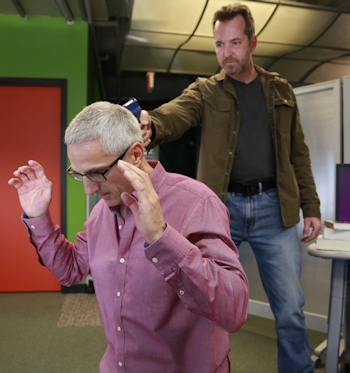Corporate Training & Services
 No employee simply decides to come into work and go on a rampage killing spree, with a firearm, knife, or other weapon. Some perceived injustice
(whether an individual event or part of a campaign) acts as the motivation and the trigger for such acts. Often, when managers and supervisors
interact with employees, their goal is to deal with issues that are effecting productivity and performance, and rarely do they consider the
emotional responses that the individual may have, regarding the exchange. A supervisor may see a disciplinary hearing as either resulting in an
increase in employee performance, or putting in place the necessary conditions for terminating a contract, etc., without recognizing that the way
they conduct the hearing could result in an emotional, rather than a rational response to their concerns. Making excuses after an event, arguing
that it was impossible to have foreseen that an employee would have reacted violently, does little for those who were injured or killed (or for
the reputation of the organization – the US Postal Service has one of the best track records regarding employee safety, however after Pat Sherrill’s
mass shooting, and the term “going postal” being coined, their reputation has never recovered).
No employee simply decides to come into work and go on a rampage killing spree, with a firearm, knife, or other weapon. Some perceived injustice
(whether an individual event or part of a campaign) acts as the motivation and the trigger for such acts. Often, when managers and supervisors
interact with employees, their goal is to deal with issues that are effecting productivity and performance, and rarely do they consider the
emotional responses that the individual may have, regarding the exchange. A supervisor may see a disciplinary hearing as either resulting in an
increase in employee performance, or putting in place the necessary conditions for terminating a contract, etc., without recognizing that the way
they conduct the hearing could result in an emotional, rather than a rational response to their concerns. Making excuses after an event, arguing
that it was impossible to have foreseen that an employee would have reacted violently, does little for those who were injured or killed (or for
the reputation of the organization – the US Postal Service has one of the best track records regarding employee safety, however after Pat Sherrill’s
mass shooting, and the term “going postal” being coined, their reputation has never recovered).
We offer training and consultancy services, in how to conduct candidate and exit interviews, workplace conflict resolution, and de-escalation, along with how to implement disciplinary hearings and the like. These things support and feed into our workplace active shooter programs and training. Rather than just look at the physical aspects of workplace violence and shootings, we look at the causes and the preventative measures that could have been taken to avoid such incidents. Terminating an employee’s contract is never easy, and always involves a certain degree of emotion, etc., however it can be done in such a way that grudges and resentment aren’t part of the result; without these feelings and perceived injustices, an ex-employee has no reason to return to their former workplace in an aggressive capacity.
Our approach to workplace active shooter incidents is a holistic one, and doesn’t just concentrate on dealing with the shooting incident itself, but looks at all factors which go into creating it. This way, those taking our courses and programs learn to predict, identify, and avoid such violent incidents, rather than just have physical solutions to deal with an event as it unfolds. If you are interested in bringing some form of training into your workpace, please contact us by clicking here
Location
Krav Maga Yashir
165 New Boston St (Unit E)
Woburn, MA 01801
Active Shooter Boston Instructor
Gershon Ben Keren

Subscribe
Sign up with your email address to receive news and updates.